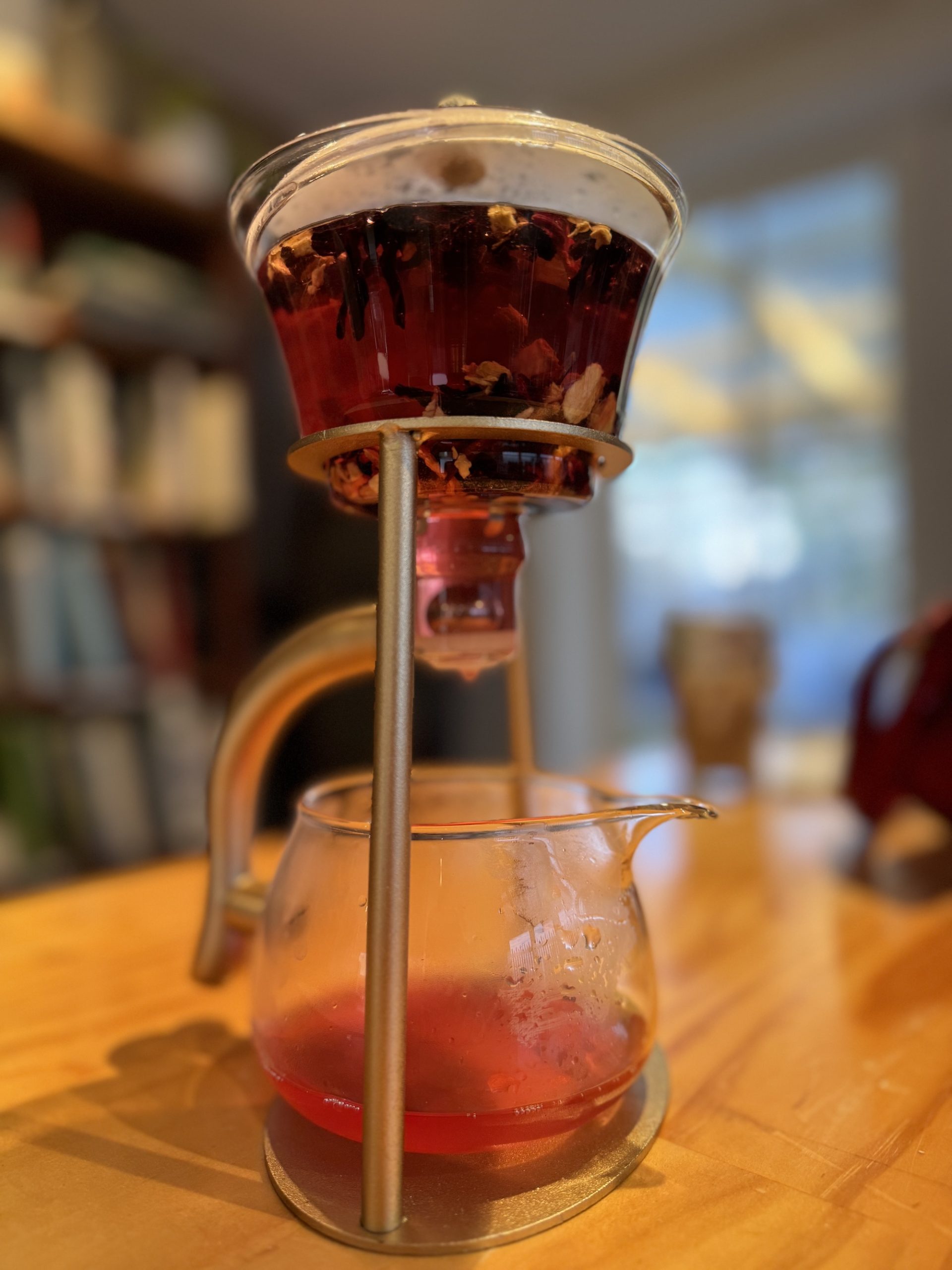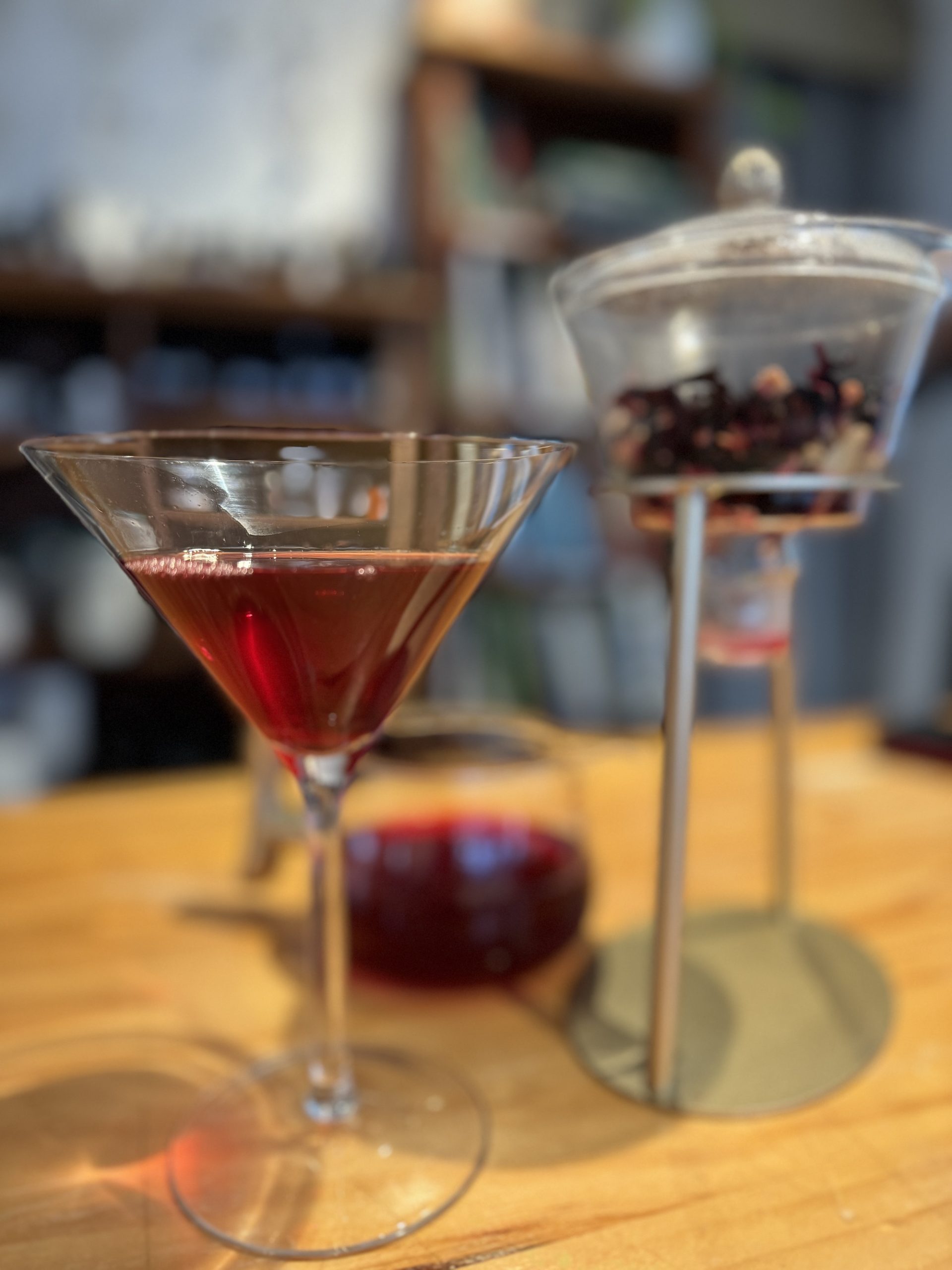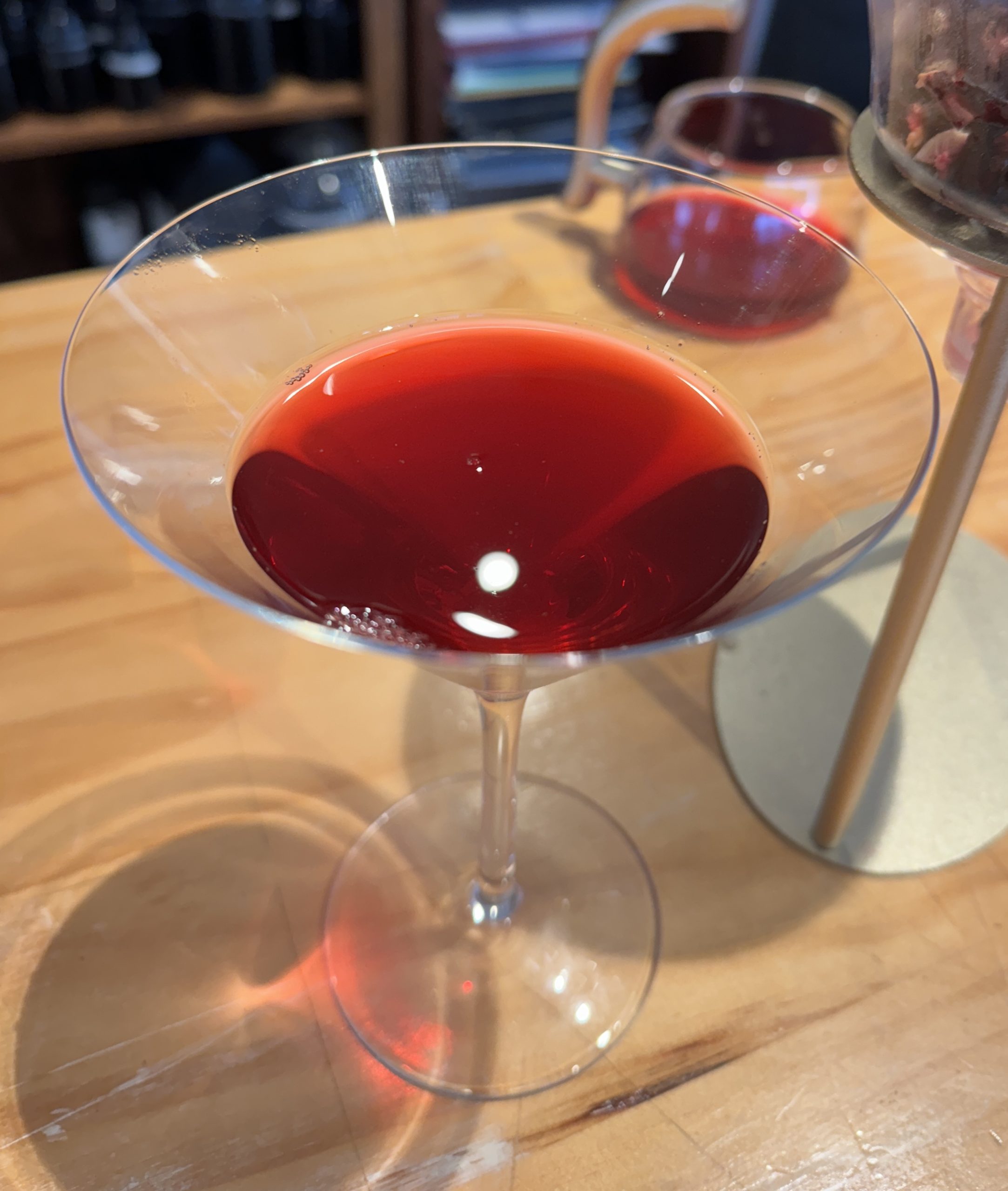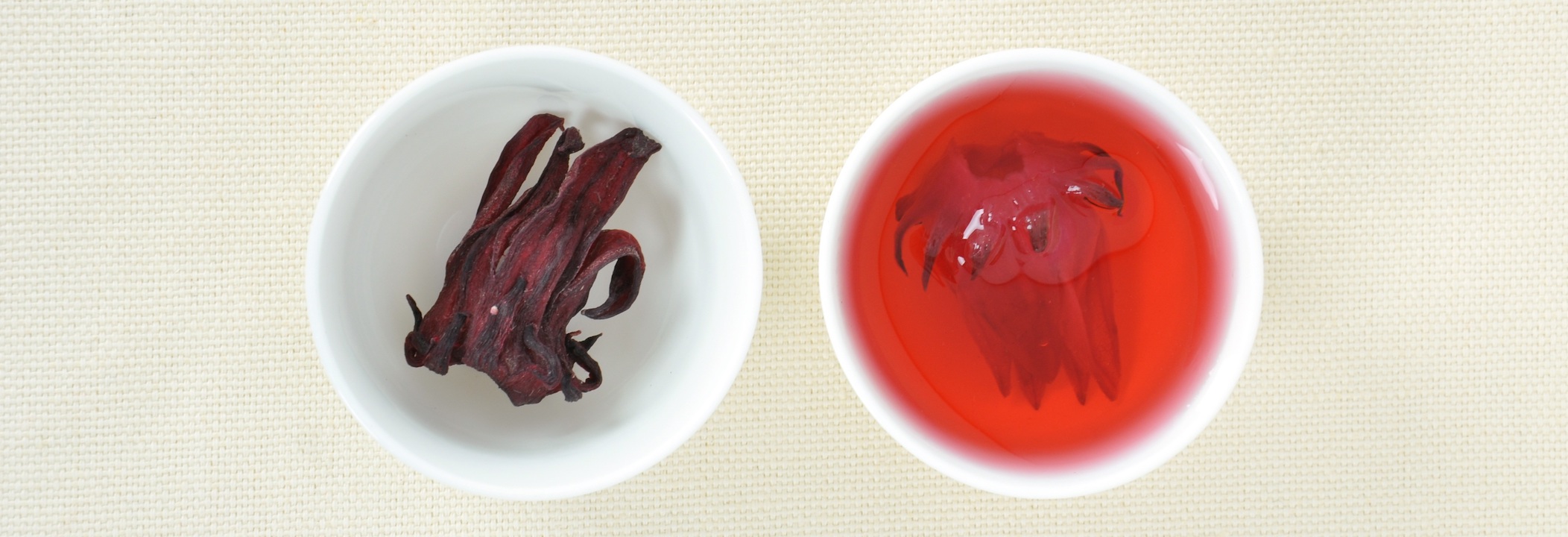Hibiscus flower, rosella, roselle…
Whatever name it goes by (and there many, across many languages) this flower (or its calyx, to be specific) would still bloom a deep, rich red when steeped for herbal infusions. Hibiscus tea is rich in antioxidants and vitamins, in particular both anthocyanins and vitamin C. Its bright red hue comes from the interplay of these two compounds—the vitamin C affects the pH of the infusion, keeping it in the lower range where anthocyanins present as red, rather than purple.
On its own it’s quite tart—sour, and astringent, but it blends well with other, sweeter berries—and rosehips and elderberries will add to the jammy flavour. You only need a tiny bit of honey (our herbal-infused berry and citrus honey make a great choice) to make a delicious drink. If you make it strong, dilute it with soda water for a refreshing pale pink long drink.
If you’re keen to try it out, here is our favourite hibiscus tea blend recipe. It’s a simple infusion, but with a very clever balance—and one you can play with to your liking by varying the steeping time. It really showcases what you can do with just three, carefully chosen ingredients. And you can read in-depth botanical profiles of all three in our Encyclopedia Botanica.
Rosella, liquorice, ginger root tea
(Makes 1 litre)
- 25g rosella flowers
- 5g liquorice root
- 5g dried ginger root
For a light infusion – steep for 15 minutes, strain.
For a more potent infusion – steep for an hour and strain.
For a concentrated infusion – steep overnight and strain.
The longer you infuse it, the sweeter and more ginger it will become. The flowers are rapidly extracted into hot water, but the liquorice and ginger are extracted more slowly as the root matrix is dense with fibre and cellulose. Drink hot, warm or cold. For a sweeter drink you can add honey or maple syrup, and make it a long drink by serving cold over ice with soda. This tea will keep in the fridge for several days.
We’ve found this is great substitute for red wine in the evening. The colour is there to entice our senses, a real promise that something delicious is on its way. It has a pleasant aromatic nose and a tart sharpness, but with that touch of heat from the ginger and a soft mouthfeel from the liquorice root. It’s rich in polyphenols like wine—but without the alcohol.







